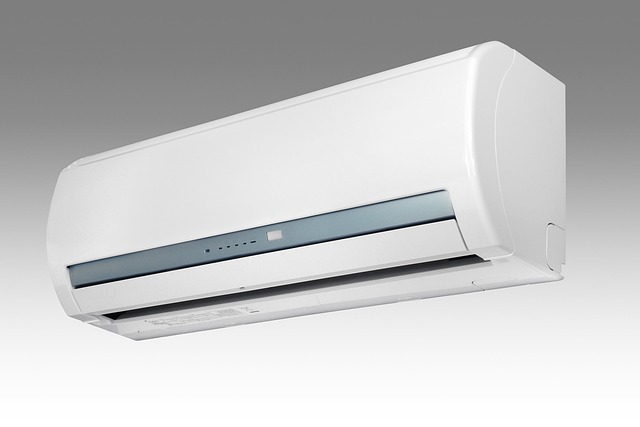HVAC and Climate Control: Factors to Consider Before Installation
Installing a new HVAC system is a significant investment that requires careful planning and consideration. From system sizing and energy efficiency to ductwork requirements and local climate factors, numerous elements influence the success of your installation. Understanding these key factors before beginning your project can help ensure optimal comfort, energy savings, and long-term system performance for your home or business.

HVAC and Climate Control: Factors to Consider Before Installation
Choosing the right heating, ventilation, and air conditioning system involves more than simply picking a unit that fits your budget. A well-planned installation considers building characteristics, local climate conditions, energy efficiency requirements, and long-term maintenance needs. Making informed decisions during the planning phase can significantly impact your comfort levels, utility costs, and system longevity.
How Do HVAC Services Determine Proper System Sizing?
Proper system sizing forms the foundation of effective climate control. Professional technicians perform detailed load calculations that account for square footage, ceiling height, insulation levels, window placement, and local climate data. Oversized systems cycle on and off frequently, leading to inefficient operation and uneven temperatures. Undersized units struggle to maintain comfortable conditions and consume excessive energy while running continuously. Licensed professionals use Manual J calculations to determine precise heating and cooling requirements, ensuring optimal system performance and energy efficiency.
What Should You Know About HVAC Companies and Installation Quality?
The expertise and reputation of installation professionals directly influence system performance and longevity. Established contractors possess proper licensing, insurance coverage, and manufacturer certifications that demonstrate their qualifications. They provide detailed written estimates, explain warranty coverage, and follow local building codes during installation. Quality installers also conduct thorough site assessments, recommend appropriate equipment based on specific needs, and perform comprehensive system testing before project completion. Researching contractor credentials, reading customer reviews, and obtaining multiple quotes helps ensure professional installation standards.
How Do Air Conditioning Companies Handle Ductwork Requirements?
Existing ductwork condition significantly impacts system efficiency and installation complexity. Professional evaluators inspect ducts for proper sizing, sealing, and insulation levels. Damaged or inadequately sized ducts require modification or replacement to achieve optimal airflow distribution. Modern high-efficiency systems often need larger ducts to accommodate increased airflow requirements. Proper duct design eliminates hot and cold spots while maintaining consistent temperatures throughout the building. Sealed and insulated ductwork prevents energy loss and improves overall system performance.
What Energy Efficiency Factors Affect System Selection?
Energy efficiency ratings directly impact operating costs and environmental impact. SEER ratings for cooling systems and AFUE ratings for heating equipment indicate efficiency levels, with higher numbers representing better performance. ENERGY STAR certified units meet strict efficiency guidelines and often qualify for utility rebates or tax incentives. Variable-speed motors, programmable thermostats, and zoned control systems further enhance efficiency by matching output to actual demand. Local utility programs may offer additional incentives for high-efficiency equipment installations.
How Do Climate Conditions Influence Equipment Choices?
Local weather patterns and seasonal temperature variations determine appropriate equipment specifications. Regions with extreme temperature swings require robust systems capable of handling peak demand periods. Humidity levels affect comfort and equipment selection, with some areas benefiting from enhanced dehumidification capabilities. Heat pump systems work efficiently in moderate climates but may require backup heating in colder regions. Understanding local climate characteristics helps determine the most suitable equipment types and sizing requirements for optimal year-round comfort.
| Service Type | Provider Examples | Cost Estimation |
|---|---|---|
| Complete System Installation | Carrier, Trane, Lennox dealers | $3,000 - $15,000+ |
| Ductwork Replacement | Local HVAC contractors | $2,500 - $8,000 |
| High-Efficiency Upgrades | Rheem, Goodman certified installers | $4,000 - $12,000 |
| Maintenance Agreements | Service companies nationwide | $150 - $500 annually |
Prices, rates, or cost estimates mentioned in this article are based on the latest available information but may change over time. Independent research is advised before making financial decisions.
What Maintenance and Warranty Considerations Matter?
Regular maintenance requirements and warranty terms affect long-term ownership costs and system reliability. Manufacturer warranties typically require professional installation and regular maintenance to remain valid. Extended warranty options provide additional protection but require careful evaluation of coverage terms and costs. Establishing maintenance schedules with qualified technicians helps prevent costly repairs and maintains peak efficiency. Understanding warranty requirements and maintenance obligations before installation ensures proper system care and protection of your investment.
Successful climate control installation requires careful evaluation of multiple factors that influence system performance, efficiency, and longevity. Working with qualified professionals who understand local conditions, building requirements, and equipment specifications helps ensure optimal results. Taking time to research options, compare proposals, and understand long-term implications leads to better decision-making and greater satisfaction with your climate control investment.




